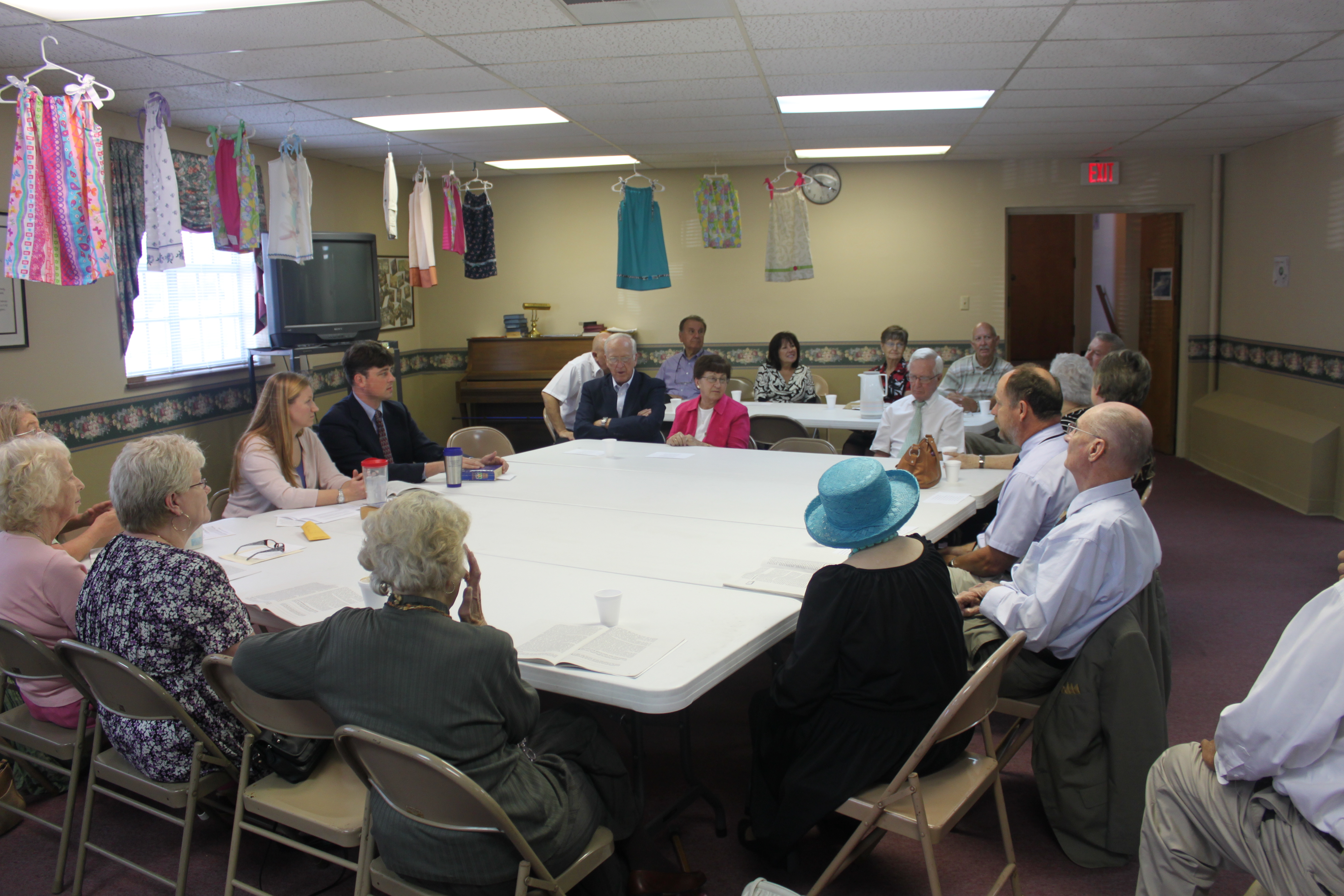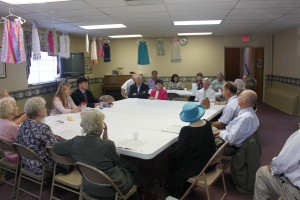Engaging from the Pulpit – by the Rev. Stephanie Sorge Wing
Our church custodian usually comes by at odd hours to take care of the church. Being a pastor, I am often at the church at those odd hours to engage him in conversation. The conversation often goes something like this.
Custodian: “Hey, preacher, how are you doing?”
Me: “Just fine, how about you?”
Custodian: “Well, I woke up this morning, wife’s not mad at me. I can’t complain!”
Sometimes he asks me how I pick out the sermon topic each week. Is it something I think the people need to hear? Is it whatever strikes me as I’m reading the Bible? I’ve explained to him a few times about the use of the Revised Common Lectionary. He and his wife attend a small, independent Baptist church, so the Lectionary is not on his radar screen. After I “explain” it, he smiles and nods, and wishes me luck.
I almost always preach from the Lectionary – not religiously, per se, but almost exclusively nonetheless. I appreciate the ecumenical aspect, knowing that in many churches across geographic and denominational lines, the same texts are being read and proclaimed. I also appreciate the canonical variety, which helps protect against settling into favorite or familiar Biblical passages.
Preaching the Lectionary can challenge a pastor to tackle the hard questions. Just recently, the Lectionary passages for September 11th included admonishments to refrain from judging others and a lesson on forgiveness that doesn’t quit. Last year’s Lectionary texts for World Communion Sunday (also celebrated as Peacemaking Sunday in the Presbyterian Church (USA)) were among the most difficult offered in all three Lectionary year cycles: Lamentations cried out to us from a place of exile, where there is no peace, and Psalm 137 heralded the happiness of those dashing the little ones of the Babylonians on the rock. There is no hiding from the disturbing force of the word of the Lord.
Using the Lectionary can provide some great opportunities for engaging congregations in the Bible. We have recently begun using the Feasting on the Word curriculum, a new web-based resource from Westminster John Knox, based on the excellent commentary series by the same name. The children and youth classes are using the material, and we started a new adult class to use the curriculum as well. In the few weeks that we have been using the curriculum, students and teachers alike have commented on how they have gotten more from the sermons, and have also been more aware of the connections between the sermons, hymns, and liturgy. It has deepened their understanding of the Scripture passages.
The semi-continuous nature of the Lectionary allows for the possibility of mini-sermon series, for building from one week to the next, for developing a richer understanding of the context and themes of particular books and writers. The four weekly selections also offer a different lens through which to view each of the individual passages, encouraging the interpretation of Scripture through the lens of Scripture.
Lectionary preaching also presents some challenges for engaging the Bible in congregations. While there is some canonical continuity, the Lectionary also tends to jump around, particularly during certain seasons. The Lectionary preacher may also choose to focus on one of four weekly texts, which can either help to preserve continuity or increase the Scriptural calisthenics. As a result, understanding and appreciation for the canon of Scripture, and even of the flow of our faith stories, can be lost.
A particular focus on what is presented in the Lectionary pericopes can also neglect what is left out of the passages – verses that are cut out or context within the larger passage that ought not be ignored. There are also many important passages left out entirely. For many members, visitors, and even preachers, the Sunday readings provide the primary – if not the only – encounter with Scripture during the week, and much is being left out.
We can no longer assume that most of our congregations know the Bible, and it’s safe to assume that many in the pews will not open up a Bible Monday through Saturday. In our preaching, we can look for even more canonical connections to be made between our preaching texts and other parts of Scripture. I recently preached the Exodus 1:8-2:10 passage from the Lectionary, and used that sermon as an opportunity to give an overview of the book of Genesis – a look at how we got here.
The children’s sermon – often an afterthought in preparation – can be used simply to tell the stories of the Bible – stories that the children and perhaps many adults have not heard before, or have not heard in many years. The liturgy is also a place to incorporate Scripture, with citations provided in the bulletin. Verbally drawing attention to the omissions of the Lectionary can also direct worshipers to take a closer look at the passages.
Another simple way to engage the congregation with the Bible is to invite them physically to turn to the Scripture passages in the pew Bibles and follow along. Most people in our congregation simply listen to the passages being read, so I recently invited the congregation to open their Bibles so they could follow along as I referred back to the passage throughout the sermon.
In many congregations today, we have one chance to engage them in the Bible – Sunday mornings. Being aware of the challenges and opportunities that this presents can help us to make the most of that time.



Pingback: Engaging the Bible in Mainline Congregations – by Mark Rich | Ecclesio.com